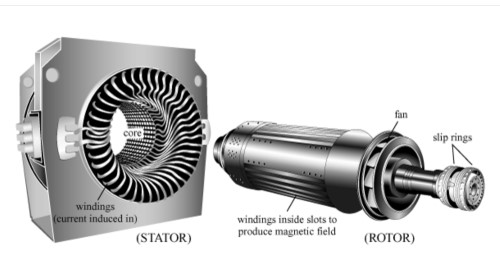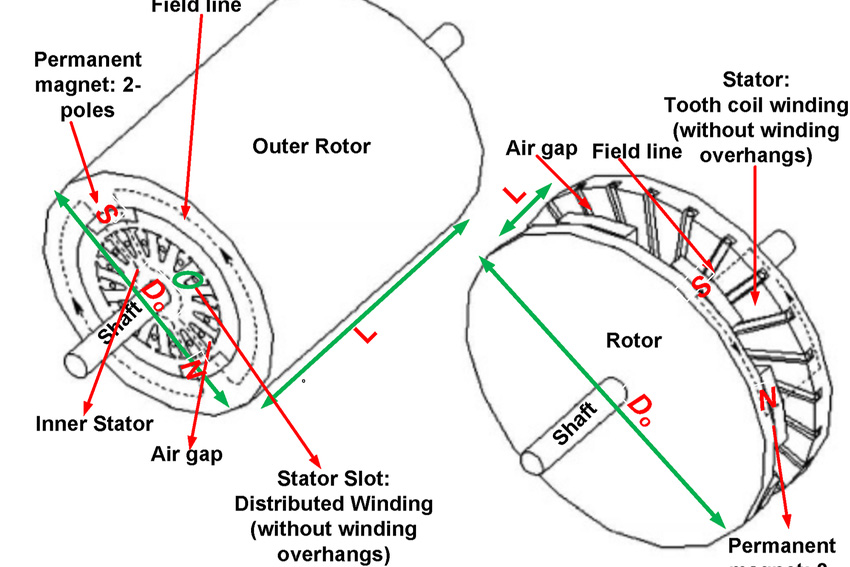Permanent Magnet Rotor vs. Induction Rotor: A Comparative Analysis in Electric Motor Technology
Introduction
Electric motors are ubiquitous in our modern world, powering everything from household appliances to industrial machinery and electric vehicles. Among the various components of an electric motor, the rotor is a crucial element that plays a significant role in determining its performance, efficiency, and application suitability. In the realm of electric motors, two common rotor types stand out: the permanent magnet rotor and the induction rotor. This article will discuss these two rotor types, exploring their respective characteristics, advantages, and applications in electric motor technology.
Understanding the Rotor: The Heart of an Electric Motor
Before we dive into the comparison, let's establish a fundamental understanding of the rotor's role in electric motors. The rotor is the rotating component of an electric motor responsible for generating mechanical motion. It interacts with the stator, which contains coils of wire, to produce a rotating magnetic field that drives the motor's output shaft.  [1]
[1]
Figure 2. Two Major Parts of Electric Motor: Stator and Rotor
Key Aspects of the Permanent Magnet Rotor
Permanent magnet rotors, as the name suggests, utilize permanent magnets, such as neodymium magnets or samarium-cobalt magnets, to create a magnetic field. These magnets retain their magnetic properties indefinitely, ensuring a consistent magnetic field. Permanent magnet rotors are also known for their high energy efficiency, thanks to the constant magnetic field. They require less electrical input to produce mechanical output, making them ideal for applications where efficiency is paramount, such as electric vehicles. Additionally, the compactness and lightness of permanent magnet rotors make them well-suited for portable and space-constrained applications, including electric scooters and drones. Also, these rotors offer precise control over motor speed and torque, making them suitable for applications requiring fine-tuned adjustments, like robotics. Related reading: Magnets Commonly Used in Permanent Magnet Motors
Main Aspects of the Induction Rotor
Induction rotors rely on electromagnetic induction to create a magnetic field. They have no permanent magnets and are known for their robustness and reliability, with fewer components susceptible to wear and tear. They are often more cost-effective to manufacture than their permanent magnet counterparts, making them a popular choice for applications where cost is a primary concern, such as HVAC systems. Additionally, induction motors are inherently self-starting, eliminating the need for additional equipment like commutators or brushes, which is advantageous in applications involving frequent starts and stops. These rotors can also provide high torque at low speeds, making them suitable for heavy-load applications like conveyor belts and industrial pumps.
| Aspect | Permanent Magnet Rotor | Induction Rotor |
| Magnetic Field Generation | Permanent magnets | Electromagnetic induction |
| Efficiency | High | Cost-effective |
| Size and Weight | Compact, Lightweight | Robust |
| Self-Starting | Not inherently | Inherently |
| Torque at Low Speed | Precise control | High torque |
Permanent Magnet Rotor vs. Induction Rotor
To choose between a permanent magnet rotor and an induction rotor, one must consider specific application requirements:
- Efficiency: For applications where energy efficiency is crucial, such as electric vehicles and wind turbines, permanent magnet rotors are the preferred choice due to their higher efficiency.
- Cost: If cost-effectiveness is a primary concern, especially in applications where the motor runs continuously at a fixed speed, induction rotors may offer a more budget-friendly solution.
- Reliability: Induction rotors are often chosen for their robustness and reliability in applications with harsh conditions, where the motor may encounter dust, moisture, or extreme temperatures.
- Size and Weight: In applications where size and weight constraints are significant, permanent magnet rotors' compactness and lightweight nature are advantageous.
- Control: If precise control over motor speed and torque is necessary, such as in robotics or electric tools, permanent magnet rotors are the better choice due to their responsiveness.
Conclusion
In a word, the choice between a permanent magnet rotor and an induction rotor depends on the specific needs of the application. Each type offers unique advantages and is tailored to excel in different scenarios. As electric motor technology continues to evolve, advancements in both rotor types further widen their applicability, ensuring that the electric motors of the future will be even more efficient, reliable, and versatile.
Stanford Magnets offers a range of advanced materials and components, including rotors, to meet the diverse needs of the electric motor industry. Our commitment to quality and innovation ensures that we continue to play a vital role in the development of cutting-edge electric motor technology. For more details, please check our homepage.
Reference:
[1] Lowe, Marcy & Golini, Ruggero & Gereffi, Gary & Ahmed, Ghada & Tokuoka, Saori. (2010). U.S. Adoption of High-Efficiency Motors and Drives: Lessons Learned.















